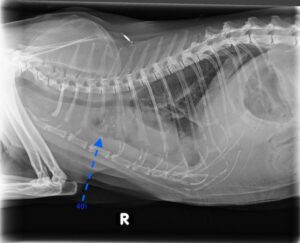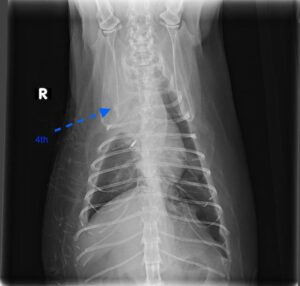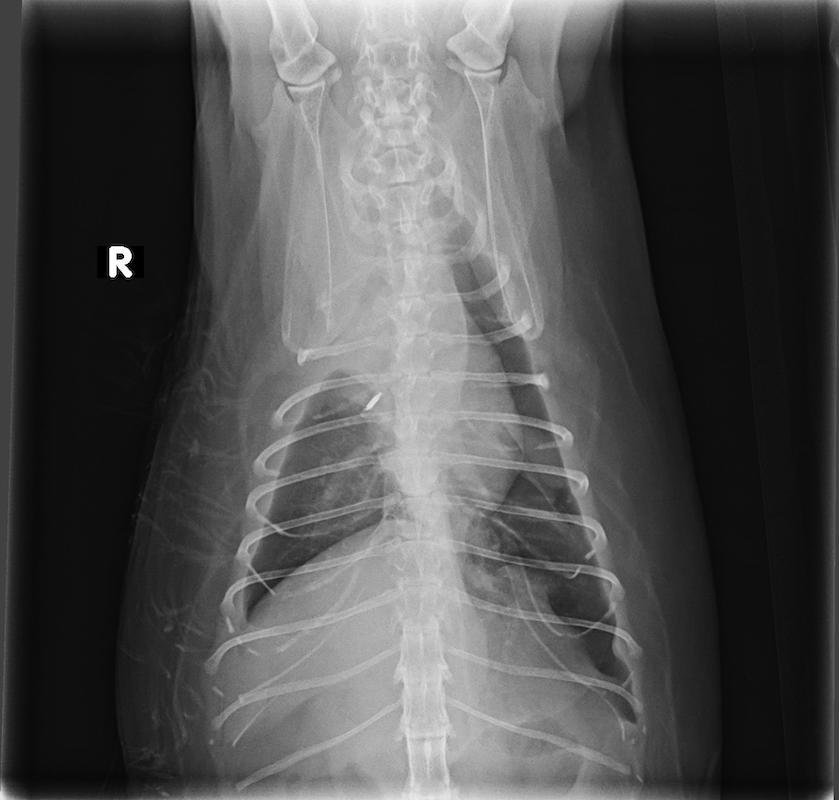Labored Breathing
Bella, 15-year-old female spayed Siamese cat, presented to her veterinarian for labored breathing and lethargy, which had progressively worsening during the prior week.
Tachypnea and inspiratory dyspnea were noted. The patient had a thin body condition.
Pleural effusion was noted to be present.
Cytology of fluid removed by thoracocentesis: mature neutrophils, sheets of large ovoid mononuclear cells with foamy cytoplasm.
3-view thoracic, post-thoracocentesis images were obtained. The radiographs showed nearly complete destruction of the proximal right 4th rib, superimposed with a focal increase in soft tissue opacity in the right cranial hemithorax. Pleural effusion was noted throughout the thorax.
Axial Bone Neoplasia


Axial bone neoplasia (right 4th rib). Differentials include chondrosarcoma, fibrosarcoma, or osteosarcoma; less likely metastatic neoplasia.
Case outcome: Palliative care was initiated. However, due to the patient’s age, discomfort, and poor prognosis, humane euthanasia was reasonably elected.
Discussion: The most common primary bone tumor in cats is osteosarcoma (70-80%), with fibrosarcoma and chondrosarcoma being less common. About 55-67% of primary bone tumors in cats are found in the appendicular skeleton (limbs) while only 33-44% are located in the axial (skull, ribs, vertebrae) skeleton, as with the cat in this case report. Additionally, axial osteosarcomas present at a significantly older age (average 10.4 years) than appendicular osteosarcomas (8 years). Feline osteosarcoma is less aggressive than it is in canines, and pulmonary metastasis in cats is rare, whereas dogs with rib osteosarcoma very commonly have lung metastasis (up to 45%).
In cats with appendicular osteosarcoma, amputation alone may be curative. In cats with rib tumors, surgery offers the best chance of progression-free survival, but clean margins can be difficult to achieve. The efficacy of adjuvant therapy (chemotherapy, radiation therapy) is not well studied since the disease is relatively uncommon in cats, and since surgery alone can be curative for the more common (appendicular) tumors.



